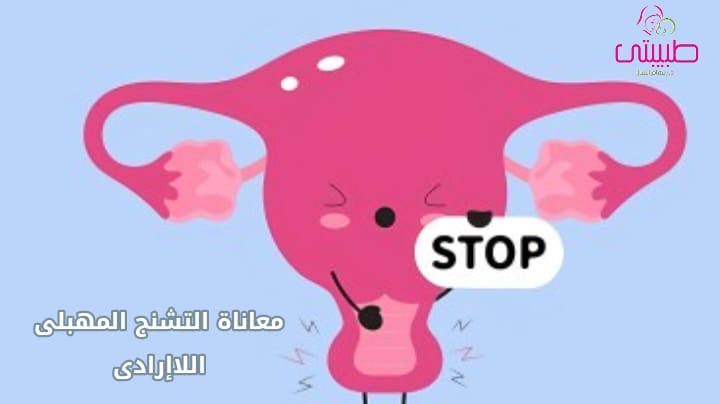Answers to Your Frequently Asked Questions – with Dr. Riham El-Shal
In our weekly episode, we will be answering a number of questions we received in the comments. Let’s start with the first one:
“Hello Doctor, I had watery white discharge a few days after ovulation. Is that normal?”
There’s absolutely no problem if you experience some discharge during the second half of your cycle. Around ovulation, it’s normal to have clear, thin discharge – this helps nourish the sperm and makes it easier for pregnancy to occur. But after ovulation, the type of discharge usually changes. We actually have an entire lesson discussing how discharge changes throughout the cycle – I really recommend you check it out.
Bahia says: “I’m not experiencing any pain, but my period is delayed. I’m single – can you help me?”
When an unmarried young woman has a delayed period, it could be due to local issues in the reproductive system, or it might be linked to hormonal imbalances. It’s very important to get checked – both with lab tests and an ultrasound. Once we identify the cause, we can decide whether to give medication to bring on the period or follow another treatment plan. Please don’t ignore a delayed cycle just because you’re not sexually active or concerned about pregnancy. A regular period is essential to maintaining hormonal balance in the body.
From “Gym Mood”: “Thank you. I started getting acne at age 13, and now at 18, I still have it, and my period is often 10 days late or more.”
This is an important connection – you’re linking irregular periods with acne, which often indicates hormonal imbalance. We need to work on regulating your menstrual cycle and restoring hormonal balance. If after that acne still persists, we can refer you to a dermatologist. But the first step is definitely with gynecology.
From Mimi Fifi: “Hello Doctor. I had an ectopic pregnancy a year after getting married, and now it’s been four months without pregnancy. My fallopian tubes are fine, my cycle is regular, and my husband’s tests are normal.”
Four months isn’t a concerning delay, Mimi. You’ve already completed the first two steps: running all the necessary tests and checking your fallopian tubes (likely through an HSG test). The next step is ovulation monitoring and timing intercourse during the fertile window. A regular cycle is a good sign that ovulation is happening, but precise timing increases the chances of pregnancy. If after a full year there’s still no pregnancy, we can start considering assisted reproductive techniques like IVF or IUI.
From “Jamsis”: “Thank you, Doctor. I’m 14 and I feel cramps like the beginning of a period, but no bleeding yet.”
We’d need a bit more context – whether you’ve had your first period or not – to give an accurate response. But pain without a period is worth monitoring.
From our dear sister Nihal Zyada: Thank you so much, Nihal. I really appreciate your kind words and support.
From Karim: “Doctor, my period has been very heavy for 11 days, after being delayed for a whole month. The doctor said I have two small blood-filled cysts.”
With ovarian cysts, it’s crucial to follow up with a doctor. Some cysts resolve on their own, while others need treatment. It’s important to know what type they are – whether they’re simple or related to endometriosis – in order to decide on the right approach.
From Hiba Marketing: “I’m in my third month of pregnancy and I started bleeding. Please help.”
My dear, bleeding during pregnancy is urgent and shouldn’t wait for a reply online. You must contact your doctor immediately. They know your medical history best and can guide you step-by-step. Please make sure to follow up regularly throughout your pregnancy. With proper care, everything will hopefully go smoothly.
From Hamada Mostafa: “I’m in my eighth month, and ever since the start of my pregnancy, I’ve had a lot of acne. I used to only get a pimple once a month before pregnancy.”
Great question! Many women experience acne and other skin changes due to hormonal fluctuations during pregnancy. It’s totally normal and usually temporary. After delivery and recovery, the body often returns to its previous state, but if not, we can consult a dermatologist at that point.
From Yasmin (via Mostafa): “I’ve had acne throughout my pregnancy – can I use any creams?”
Please don’t use any topical creams on your face during pregnancy without medical advice. Facial skin is very sensitive, and some creams can cause lasting damage. The safest approach during pregnancy is to use mild moisturizers suitable for your skin type, and only under guidance from a dermatologist.
From Kuwait: “Doctor, how many times can Clomid be taken for ovulation if the follicle is 16mm on day 12 of the cycle?”
We’ve covered this before – please don’t take Clomid on your own. The dosage and duration differ from case to case. Some women need half a pill, others need more, and that depends entirely on your doctor’s evaluation and monitoring.
From Shorouq Alaa: “I have PCOS and I’m taking Metformin (Sydovage). Can it help me get pregnant?”
It’s possible, but not guaranteed. Pregnancy can occur even if PCOS hasn’t resolved completely. Metformin is a helpful medication, but once you conceive, you need to consult your doctor about whether to continue or stop it – especially with PCOS cases.
From Umm Imran (Algeria): “I’m 6 weeks pregnant and had thyroid surgery. My lab results are very high. Could this affect my baby?”
We need to know which thyroid tests were elevated – was it TSH, Free T4, or something else? Was it hyperthyroidism or hypothyroidism? Please follow up with an endocrinologist. They’re the right specialists for this. Thyroid issues can usually be managed safely during pregnancy, but it depends on the exact diagnosis and test results.
From Vizak: “Peace, Doctor. I’m 25 and have had 3 C-sections. My husband complains that during intimacy, he feels something coming out of me.”
This type of issue must be addressed medically – both partners need to be examined. You should be seen by a gynecologist and he should see a urologist or male fertility specialist. Unfortunately, many couples avoid discussing such topics, even though they can deeply impact the relationship. These concerns deserve careful medical evaluation and respectful communication within the relationship.
Can we take Omega-3 during pregnancy?
Yes, you can take Omega-3 supplements from the first month of pregnancy. Even better, if you can eat two servings of fish per week, that would provide a great natural source. If you don’t like fish, then supplements are a good alternative.
“For more articles about vaginismus and Marital relationship’s difficulties:”






